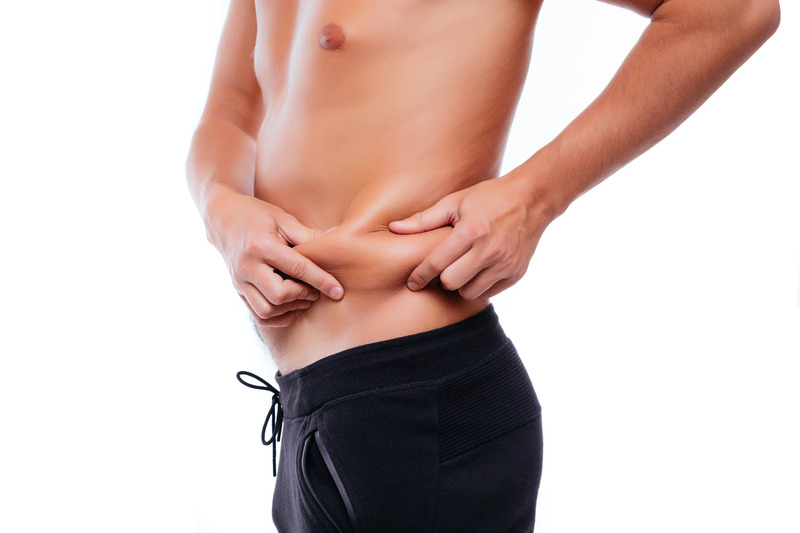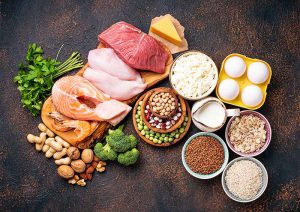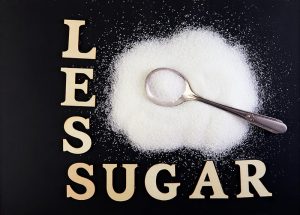If you’re at the heavier end of the scales, fat burning has undoubtedly been on your mind at one time. We all have those areas of our bodies that seem to suck up fat faster than others, whether it’s your stomach, thighs or even your face.
While where fat is stored can differ from one guy to the next, we’re more interested in how to lose fat and fat loss occurs.
So let’s get started.
How fat burning happens
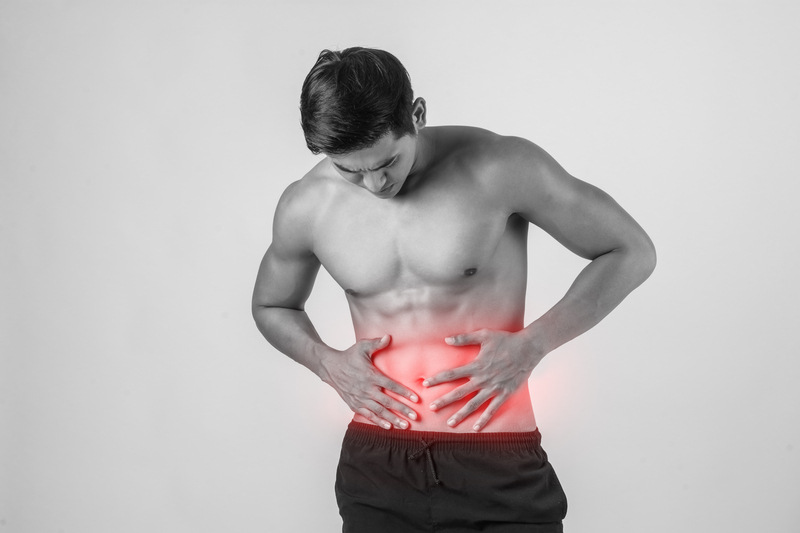
When we talk about fat loss, how does it work? The term ‘fat burning’ isn’t quite enough to explain how our bodies burn fat. I mean, it doesn’t literally just fall off, so where does it even go?
In short, we know that if we’re carrying a little extra weight, we’re taking in more energy (calories) than we’re using.
Our bodies use this energy in a range of ways, not just in physical exercise. This includes:
- At rest – After all, your heart needs energy to pump blood around your body, while your lungs also need it to breathe and your brain to think. This is otherwise known as your ‘basal metabolism’.
- When active – Whether you’re doing circuits in the gym or simply getting off the couch, your muscles need energy to do so.
- When eating – Yep, even your digestive system needs energy in order to break down the food you eat and store it, too.
Popular safe and legal steroid alternatives for cutting
So what happens to fat loss when you’re dieting (or cutting)?
This is when you’re eating fewer calories than your body needs. When this deficit occurs, your body still needs to be able to function, so it looks to your fat reserves for energy – therefore burning fat.
But where do these fat deposits go?
Now it sounds kinda gross, but this is how the byproducts of fat metabolism leave your body (aka, how fat burning happens).
- As water – Escaping through your skin when you sweat, as well as your kidneys, meaning that you urinate it out
- As carbon dioxide – When you breathe out
How to burn body fat: Exercise

When we start working out, our muscles first burn through stored glycogen for energy. After around 30 to 60 minutes of aerobic exercise, it diverts to burning fat.
Think about it. If you’re consuming the same amount of calories daily, but doing no exercise, you’re likely to maintain your current weight, or even gain it. When you work in a calorie deficit, your body isn’t receiving enough energy through food, so it’ll start burning fat instead.
So when we add exercise into the mix (both cardio and strength training), you’re gonna be burning fat in no time, while gaining muscle.
Experts suggest at least 30 minutes of cardio, two to three times each week, while also incorporating weightlifting and resistance training. Since increasing your muscle mass can actually help burn more calories and raise your basic metabolic rate, the two combined can have you burning fat full steam ahead!
What’s the best way to lose body fat?
If you’re trying to maximize fat loss, first you need to know how your body uses calories for fuel – as well as where you get your energy from.
We get energy from fat, carbohydrates and protein. But our bodies use these different sources in a variety of ways. Sure, we’d all love our bodies to look to fat stores for maximum fat loss – but it doesn’t quite work that way.
Using more fat doesn’t necessarily mean you’ll be losing more. Getting to grips with the best way to lose fat starts with knowing the basics about how our bodies get energy.
When we’re talking about fuel, our bodies primarily look to fat and carbohydrates, with protein mainly used for muscle repair post-exercise. A small amount of protein is used during exercise, but fat and carbs take the lead.
Also Read: The Ultimate Bodyweight Workout
While there is no set ratio for these fuels, they can shift according to the type of activity you’re doing, so let’s take a look.
High-intensity exercise
When we’re doing high-intensity exercise, such as running at a fast pace, our body will rely on carbs for fuel, over fat.
But why?
It’s all about metabolic pathways. The metabolic pathways available to break carbs down for energy are more efficient than those that break down fat.
Slower-paced exercise
This means that naturally, longer, slower-paced exercise results in fat being used for energy over carbs.
But I wouldn’t get too caught up about fats over carbs, however. When it comes to losing weight, what matters is burning more calories.
The fat burning zone

For as long as I can remember, there have been arguments and discussions about the fat burning zone and the best way to lose fat. Many claim that the fat burning zone is a complete myth, however, this theory still exists amongst weight loss circles.
Some research has shown that lower intensity exercise will use more fat for energy, maximizing your fat loss efforts. The idea behind the mysterious ‘fat burning zone’ is that exercising within a certain heart rate zone (around 55 to 65% of your maximum heart rate) will encourage higher fat loss.
So much so, that apps, smart watches and even gym equipment tell us about the fat burning zone. While exercising at a slower, less intense pace isn’t a bad thing, it won’t equal fat loss unless you’re burning more calories than you’re consuming.
So how can you get that high calorie burn? Exercise at higher intensities. Hitting the right balance of low-intensity and high-intensity exercise is key.
Having some variety in your workouts will not only help you stay motivated, but it’ll also help to prevent overuse injuries and work multiple muscle groups.
How to lose fat
So what is the best way to lose body fat? Whether you believe in the fat burning zone or not, it’s clear that in order for fat loss to occur, we need to be paying attention to calorie intake and burn.
Let’s take a look at what you need to get that fat burning!
Work in a calorie deficit
Like we mentioned earlier, a calorie deficit is when you consume fewer calories than your body requires to stay at its current weight. Some of us focus solely on our diet for fat loss, however, a mixture of healthy diet and exercise is recommended.
Fat loss and high-intensity cardio

Let’s set things straight. When we talk about high-intensity cardio, we’re talking about 80 to 90% of your maximum heart rate (MHR).
This means that your exercise needs to feel challenging, leaving you pretty damn breathless. As well as improving endurance and aerobic capacity, this type of training can help you hit your fat burning goals.
Let’s put it into perspective. Someone who weighs 150-pounds running at 6mph for 30 minutes would be around 341 calories. If the same person walked at 3.5mph for 30 minutes, they’d likely burn around 136 calories.
But it isn’t all about how to burn body fat, since exercising at high-intensity too often could put you at risk – especially if you’re just starting out. Be sure to start off slow, especially if you’re a newbie to intense exercise, have an injury or some kind of medical condition.
So instead of making all of your workouts high-intensity, aim to do several days of cardio each week, with maybe one to two in the high range.
Also Read: How to measure your body fat percentage
Here are some examples of high-intensity workouts to incorporate into your fat loss plan.
- Exercising at fast pace – Aim to exercise at a fast pace for around 20 minutes straight. Whether it’s an activity or machine in the gym, keep yourself in that high-intensity zone through the whole workout.
- Tabata training, a form of HIIT (high-intensity interval training) – HIIT workouts generally combine short bursts of intense exercise with short periods of rest. After ploughing through this, you’ll really be feeling that fat burning for sure!
- Other interval training – Getting real intense with short exercise bursts, switching from a more difficult segment (for example, running for 30 – 60 seconds) to a recovery segment (walking for 1 – 2 minutes).
Fat burning moderate-intensity cardio
Moderate-intensity cardio is also considered one of the best ways to lose body fat. Typically, it falls between 70 to 80% of your maximum heart rate.
Naturally, you’ll be breathing harder than normal, allowing you to carry on a conversation, unlike the high-intensity we just covered.
There are some great benefits associated with moderate-intensity cardio, including working towards fat loss – such as:
- Overall health – Even a slight increase in exercise can benefit your general health, while also helping to lower your risk of heart disease, high blood pressure and diabetes.
- Build up endurance – Instead of throwing yourself in at the deep end of high-intensity, this type of exercise helps you to build up endurance and strength, while still being able to manage your workouts.
- More variety – While high-intensity typically involves a fast pace or high impact, moderate allows you to just kick your light exercise up a notch. Whether you’re raking leaves in the yard or taking a lot of stairs, if you work hard enough it can tip into this category.
Low-intensity cardio
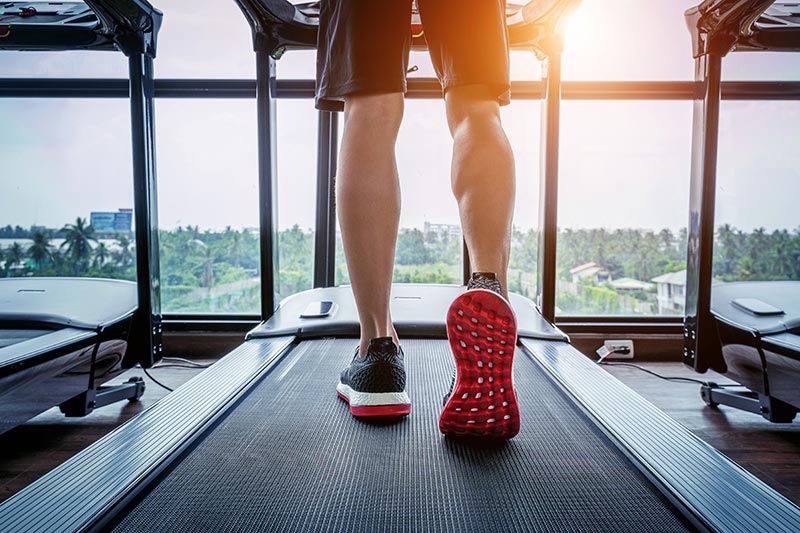
Typically considered around 60 to 70% of your MHR, there’s no questioning it, this is the lightest form of exercise.
During this, you’re probably feeling pretty comfortable, and nothing really poses that much of a challenge. Since it’s pretty easy to maintain and when paired with the idea that it equals high fat burning, many opt to stay in this zone. However, if you push yourself a little harder, you’ll really be maximizing that fat loss opportunity.
But while low-intensity may not be the type of cardio we’d necessarily recommend for burning fat in the gym, the chances are you’re already doing this level of cardio every day. Whether it’s a short walk, gardening or a simple stretch routine.
When it comes to low-intensity cardio, think pilates and yoga.
How to burn body fat: Lift weights

As well as helping you build muscle, lifting weights can increase fat loss. Both lifting heavy and doing resistance exercise can encourage fat burning, especially when paired with a healthy diet.
Here are some more benefits of lifting weights.
Fat loss
As well as burning calories during your workout, lifting weights at a higher intensity has the ability to increase afterburn. That means that long after your gym session, your body will continue to burn calories.
Kickstart metabolism
If you’re trying to work out how to burn body fat, a diet-only approach could actually lower your resting metabolic rate by some 20% each day.
So even if you’re cutting calories and aiming for fat loss, lifting heavy in the gym can help you keep your muscle and keep your metabolism high.
Preserve muscle mass

Whether you’re dieting in general or cutting for fat loss, weight training can help you to maintain muscle mass during your diet. Muscle is metabolically active, which means that when you lose muscle mass, you also lose the extra calorie-burn that muscle can provide.
To get started, opt for a total body workout and complete this twice a week, with at least a day or two in between. As you start getting stronger and encourage fat burning, you’ll be able to do more exercises and lift even heavier.
Also Read: Legal Steroid Alternatives That Work Fast
While a combination of diet control and weight training for fat loss won’t happen overnight, you’ll soon start to notice the difference in your body.
Staying consistent with exercise
To ensure you’re getting regular exercise into your life, we’ve got some tips to help you stay on track and hit your fat loss goals.
- Switch up your routine – Each day we make decisions that can impact our daily exercise, and not just time spent in the gym. Try parking further from the store for a longer walk, or do an extra lap when you’re inside.
- Focus on exercise – Schedule your day around your exercise, rather than trying to squeeze a workout in at the last possible moment. Make it a priority!
- Plan your time – Keeping to your workout plan is half the battle, so make sure you plan exercise time daily, even if it’s just a short workout.
- Split it up – Can’t commit to 2 hours at the gym? Split up your workout throughout the day. Whether it’s waking up earlier or exercising after work, spread it out to stay on track.
How to burn body fat FAST
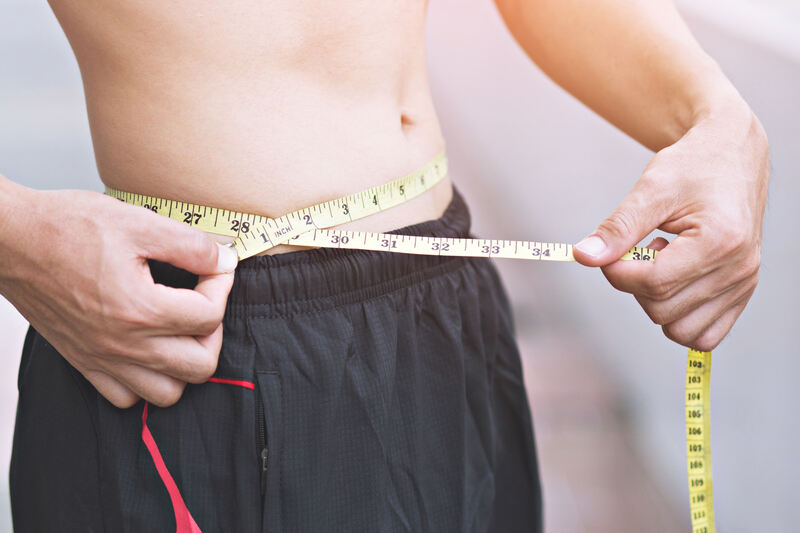
With these fat burning tips, you’ll be well on your way to hitting your fat loss goals!
If during a cut, you’re struggling to shed excess fat, we’ve got just the thing. Our cutting products cut through fat quickly, protecting lean muscle mass and boosting your energy.
Go smash it, you’ve got this.



